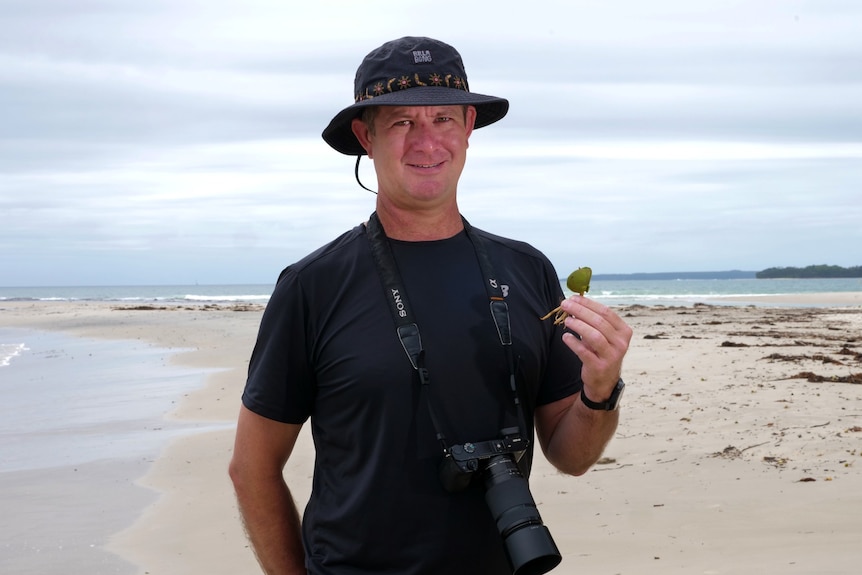Citizen scientist Dion Maple has a special interest in moths. He even sets up black lights at night to attract different species.
His favourite is the crayon emerald.
“When I found it, I couldn’t believe it existed because it looks like someone drew it with crayon,” Mr Maple says.
“It’s a rare species too, so that’s my favourite record so far.”
The CSIRO says there are relatively few specimens of the rare crayon emerald in the Australian National Insect Collection.
It’s just one of about 15,000 observations Mr Maple has made to the iNaturalist app, which collects citizen scientists’ photos and descriptions of flora and fauna.

Mr Maple, from Jervis Bay on the New South Wales south coast, also has the honour of having made the 100,000th observation by his nature group Budawang Coastal Atlas of Life to the site.
“I knew it was getting close to the record and I happened to be at work, saw a moth on the wall of one of the buildings, got a picture, threw it up then found out it ended up being that record,” he says.
Top target
But it is another moth that is playing on Mr Maple’s mind and proving frustratingly elusive.
A few years ago, he photographed a brown moth with a white, dotted pattern on its wings and blonde antennae.

He didn’t realise what he had, until an expert told him it was likely an Oxycanus incanus, a moth that has barely been seen since it was first discovered more than 100 years ago in the Jervis Bay area.
But tracking it down again has been challenging.
“I need to catch one to have it examined, and I haven’t seen it for a couple of years,” Mr Maple says.
“It’s my top target and I need to get that better sample.”

Ethan Beaver, a PhD student researching moths at the CSIRO’s Australian National Insect Collection, says Oxycanus incanus has not been collected since the 1930s.
“Many of these kinds of moths are highly localised and have extremely specific, weather-dependent flight periods, two factors that make specimen collection challenging for entomologists,” he said.
“iNaturalist adds important temporal and distribution data for many species in need of further research.”
Knowing your local plants and animals
Mr Maple’s group, Budawang Coast Atlas of Life, explores and documents flora and fauna from Kangaroo Valley to Moruya in southern New South Wales.
“I moved to the area in 2017 and really wanted to learn the different species around and someone sent me a picture of a plant and asked me to identify it,” Mr Maple says.

“From there, I found the iNautralist app, and from that point on, I was fixated on it and went through my old records of pictures of plants and animals and identified them all.
“I then started searching the local area for different plants and animals I could find.”
Emotional connection with your ‘patch’
Annie Lane is the chair of both the Budawang Coast Atlas of Life and the Australian Citizen Science Association.
She says citizen scientists play an important role in providing data for researchers to observe how the landscape is faring and changing.
“It gives a broader picture of the biodiversity in our region and that can be useful for scientists to observe where species occur, what change is happening or where there may be threatened species,” she says.

“It’s [iNaturalist] a rich database, and over time, it will give us a lot more information about how things are moving around in response to certain challenges.”
She says the Budawang group has made some important contributions to the database.
“Nine insects that had never been photographed before have been photographed in our region, and it shows the incredible value of citizen science.
“People are everywhere with their eyes and ears and are really interested in nature, and it’s a beautiful thing.
“I think the more you know about your patch and understand how it works and change, it gives you a stronger emotional connection.”
Get our local newsletter, delivered free each Thursday
